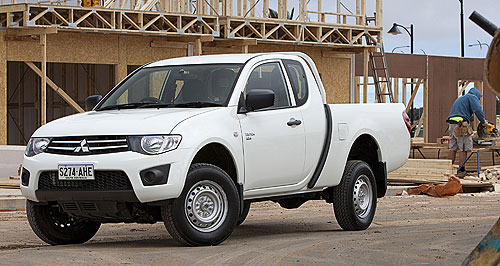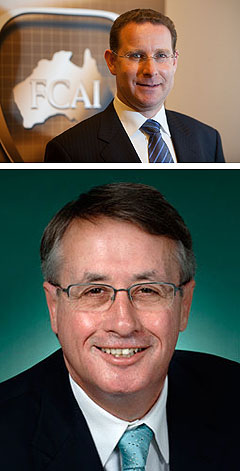Tax breaks timing to skew car market: FCAI
BY RON HAMMERTON | 10th May 2011

FCAI chief executive Andrew McKellar told GoAuto that because the new system was timed to start on July 1 next year, it was likely to cause a drought among small-business car customers leading up to the start date and then a spike in sales immediately after it.
He said the main benefit would be to small business cash flows, as they get an instant depreciation of $5000 instead of the current $1000.
“Our initial assessment is that there is not a lot in it for the car industry,” he said today. “It is not likely to result in a significant additional volume impact in terms of sales in the market.
“The key issue we would have a concern about is that if you have a tax break that is not going to come into affect for another 12 months, then there is a risk that as we get closer to that point in time people will hold off purchases.
“All it does is cause a bit of a drought before the event and then a bit of a spike afterwards and then it goes back to normal.

“Basically, this is a reasonably small cash-flow measure for small business.” In the new rules announced ahead of the federal budget, the Gillard government said it would provide small businesses with an instant tax write-off of the first $5000 of any motor vehicle purchased from 2012-13, up from the current $1000.
Treasurer Wayne Swan said a tradesman on a 30 per cent marginal tax rate who bought a new $33,960 ute would receive an extra tax benefit of $1275 in the year of vehicle purchase.
“The remainder of the purchase value can be transferred into the general small business depreciation pool, which is depreciated at 15 per cent in the first year and 30 per cent in later years.
“This measure is estimated to cost $350 million over the forward estimates and builds on the government’s existing tax reforms for small businesses to be introduced in 2012-13.” Mr McKellar said the new, accelerated tax depreciation system differed from business tax breaks introduced as a temporary measure to boost the car industry and stimulate the economy in the global financial crisis in 2009.
Under those temporary arrangements, small businesses were allowed to claim extra tax deductions of up to 50 per cent on vehicles, with other businesses allowed up to claim an extra 30 per cent for a period before being scaled back to an extra 10 per cent. The program ended on December 31, 2009.
“That was put in place as a stimulus measure because that gave businesses the opportunity to depreciate an extra amount for the vehicle,” he said.
“This (2011) measure is much more a timing mechanism – you just get a slightly earlier write-down of the purchase price of the vehicle, but at the end of the day you can’t depreciate more than 100 per cent.” The 2009 tax breaks were credited with holding the slide in 2009 light commercial vehicle sales to just 2.1 per cent as tradies, farmers and others bought up.
New measures governing fringe benefits tax claims on motor vehicles are also expected in the 2011 budget, with the main feature rumoured to be a flat rate 20 per cent statutory formula in place of the current system that has differing rates below and above 25,000km traveled in a year.
That system caused an aberration in which fleets paid less FBT if drivers exceeded 25,000km, effectively encouraging them to run up extra, unnecessary kilometres to achieve that point.
The latest switch with a 20 per cent flat rate – in line with a recommendation in the Henry Tax Review – is expected to gouge up to $1 billion out of vehicle fleets, mainly from high-kilometre drivers.
The Australiasian Fleet Managers Association says a flat rate system is welcome, but that a 20 per cent rate is a tax grab.
It says the government should introduce a revenue-neutral rate, which it estimates to be between 11 per cent and 16 per cent.
Mr McKellar said company car drivers traveling fewer than 25,000km a year are likely to be better off under the new system, but drivers over that mark are likely to pay more.
“The key issue that needs to be looked at in detail is, particularly for those people who are driving longer distances for legitimate business purposes, is whether the log book method is closed off,” he said.
“That would potentially place them at a serious disadvantage.
“If you are a stock and station agent or a traveling sales person, then you are doing all that travel for business purposes, so you are incurring the expense, but if you can’t then claim according to usage, using a log book, then you are going to end up paying a much higher effective tax rate you otherwise would have if you are allowed to use the log book method.
“In principle, any business usage should be deductible.”